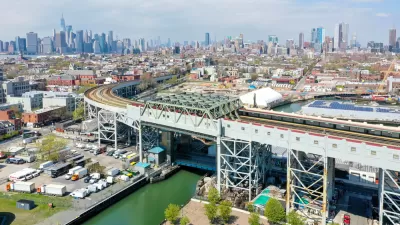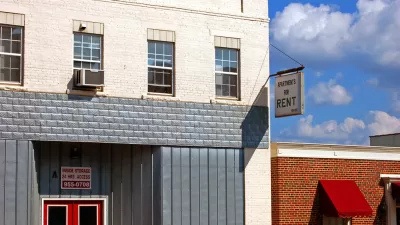San Francisco loves process and fears change. It's costing residents in more ways than housing, laments David Prowler, former Special Assistant to Mayor Willie Brown.
San Francisco is a city with one-tenth the population of New York City, and one-eighth the amount of transit rail track. However, it forces people to live outside the city, to commute farther to work or home. San Francisco's Planning Department processes three times more applications than New York City's—not because there are more projects but because nearly everything requires discretionary review, writes David Prowler, former Special Assistant to Mayor Willie Brown, former Planning Commissioner, and real estate consultant. He continues,
New York and San Francisco are both paying the price of gentrification and revival. People get pushed out, or crowded, or have long commutes. But the two cities are different in key ways. In San Francisco, if you want a walkable neighborhood with cafes and bakeries and the amenities that Jane Jacobs championed, you have few choices. San Francisco doesn’t have the equivalent of a Cobble Hill, a Jackson Heights, or a Hoboken, and lacks the reliable, regional public transit system that would make longer commutes bearable.
The reason for this difference, he argues, is fear of change. It has become the city's culture, its DNA. San Franciscans use process to thwart change:
Paradoxically, in a city famed for new ideas, resistance to change is a cherished San Francisco value. . . That’s because public review—with generous opportunities to appeal—is a cherished sport here.
While Prowler is not hopeful that the city's dysfunctional resistance to change will soon subside, he believes some key areas need to be addressed:
Most development projects should go forward if they comply with planning codes. The arduous, costly, and risky review and appeals processes should be streamlined. The California Environmental Quality Act should be amended so that it encourages smart growth rather than sprawl. Small infill projects should be exempted.
FULL STORY: San Francisco: The Status Quo City

Alabama: Trump Terminates Settlements for Black Communities Harmed By Raw Sewage
Trump deemed the landmark civil rights agreement “illegal DEI and environmental justice policy.”

Planetizen Federal Action Tracker
A weekly monitor of how Trump’s orders and actions are impacting planners and planning in America.

The 120 Year Old Tiny Home Villages That Sheltered San Francisco’s Earthquake Refugees
More than a century ago, San Francisco mobilized to house thousands of residents displaced by the 1906 earthquake. Could their strategy offer a model for the present?

In Both Crashes and Crime, Public Transportation is Far Safer than Driving
Contrary to popular assumptions, public transportation has far lower crash and crime rates than automobile travel. For safer communities, improve and encourage transit travel.

Report: Zoning Reforms Should Complement Nashville’s Ambitious Transit Plan
Without reform, restrictive zoning codes will limit the impact of the city’s planned transit expansion and could exclude some of the residents who depend on transit the most.

Judge Orders Release of Frozen IRA, IIJA Funding
The decision is a victory for environmental groups who charged that freezing funds for critical infrastructure and disaster response programs caused “real and irreparable harm” to communities.
Urban Design for Planners 1: Software Tools
This six-course series explores essential urban design concepts using open source software and equips planners with the tools they need to participate fully in the urban design process.
Planning for Universal Design
Learn the tools for implementing Universal Design in planning regulations.
Clanton & Associates, Inc.
Jessamine County Fiscal Court
Institute for Housing and Urban Development Studies (IHS)
City of Grandview
Harvard GSD Executive Education
Toledo-Lucas County Plan Commissions
Salt Lake City
NYU Wagner Graduate School of Public Service




























